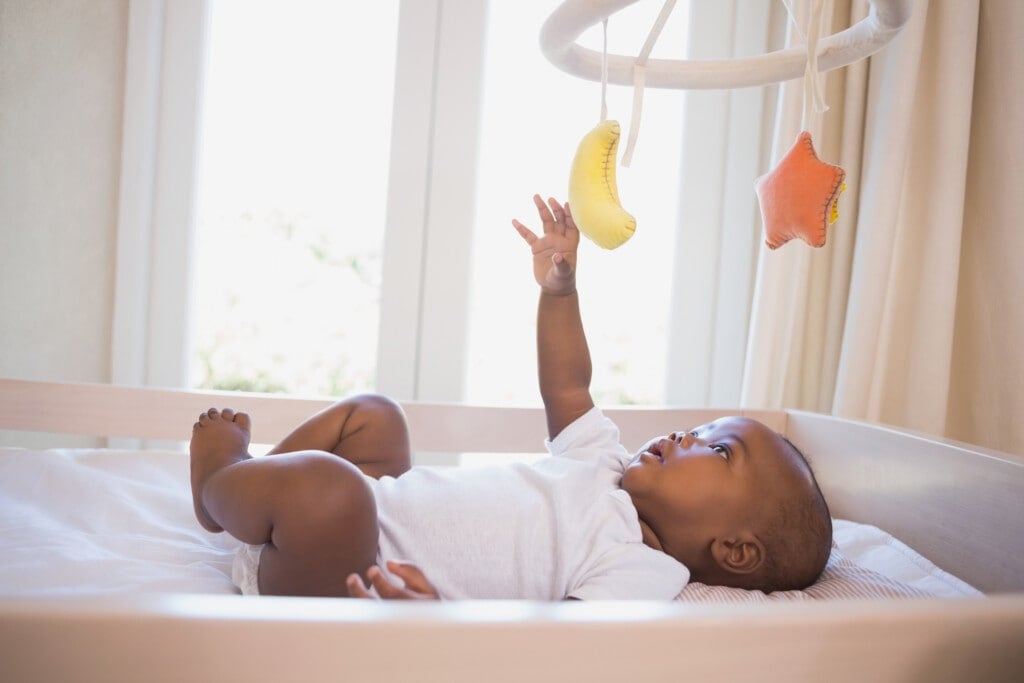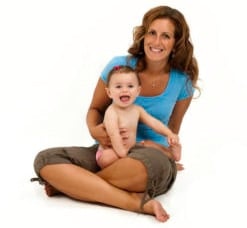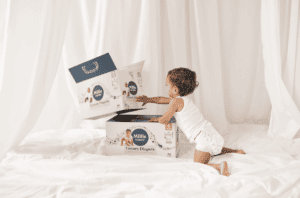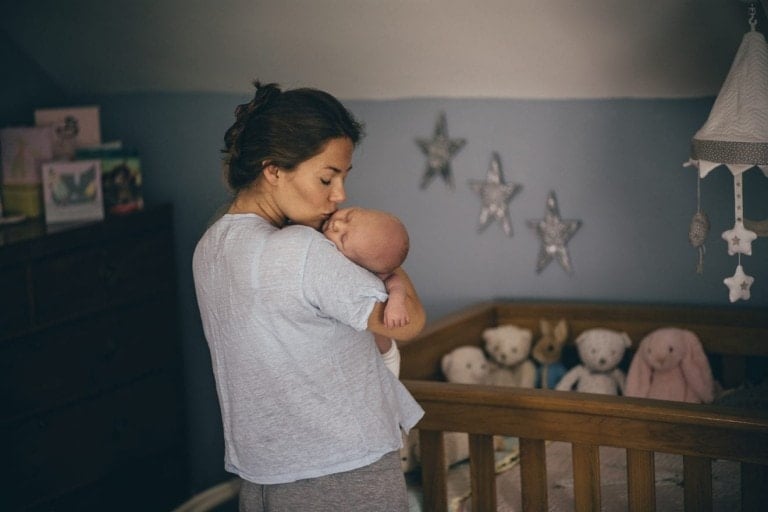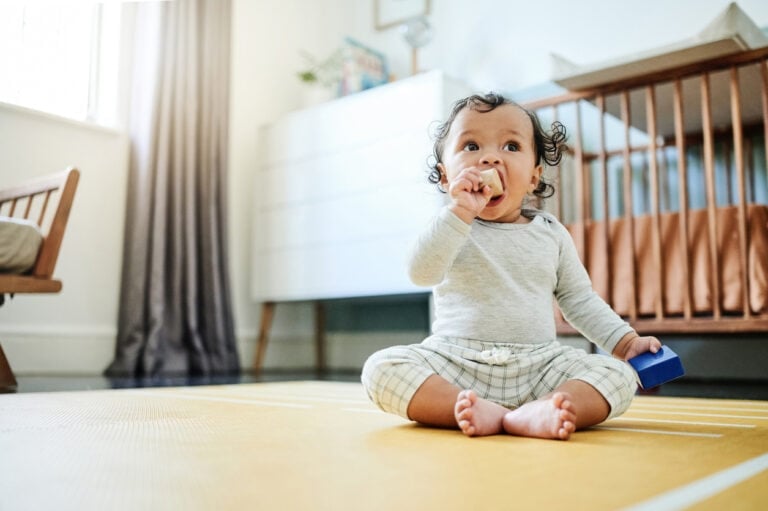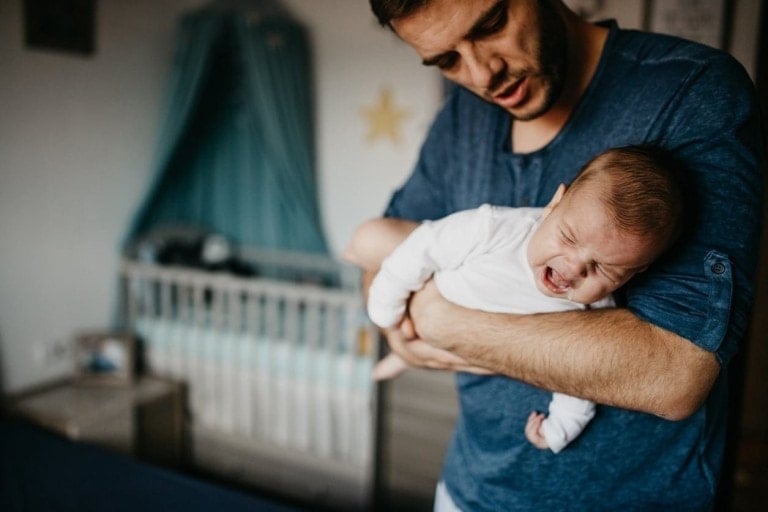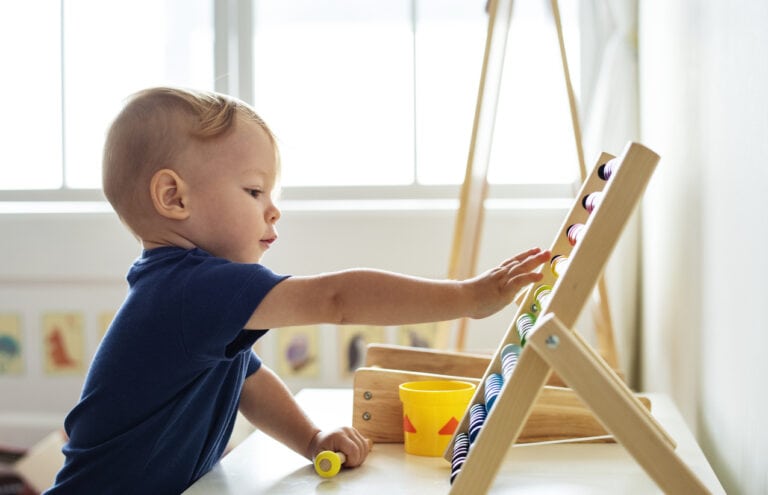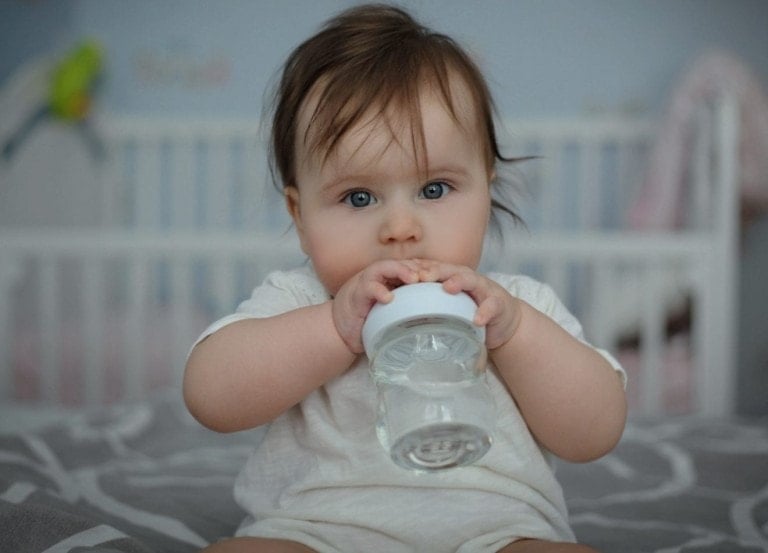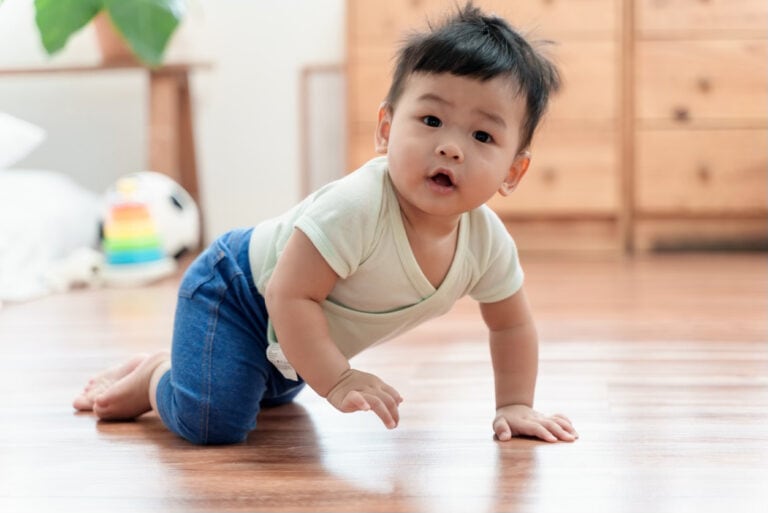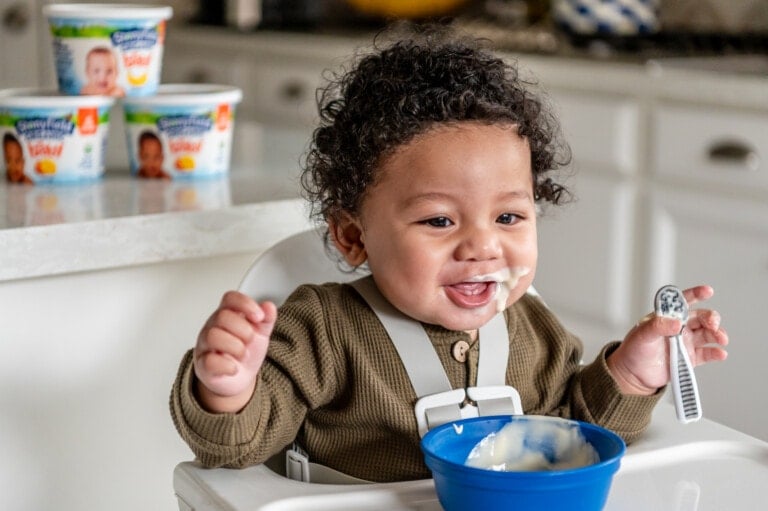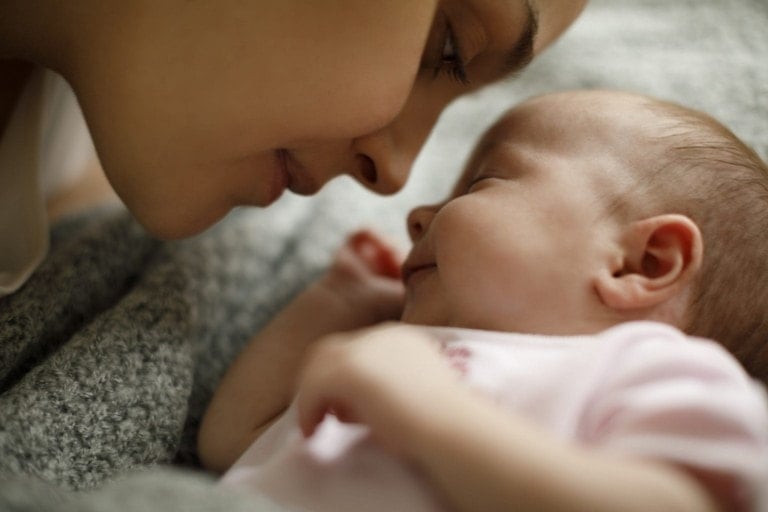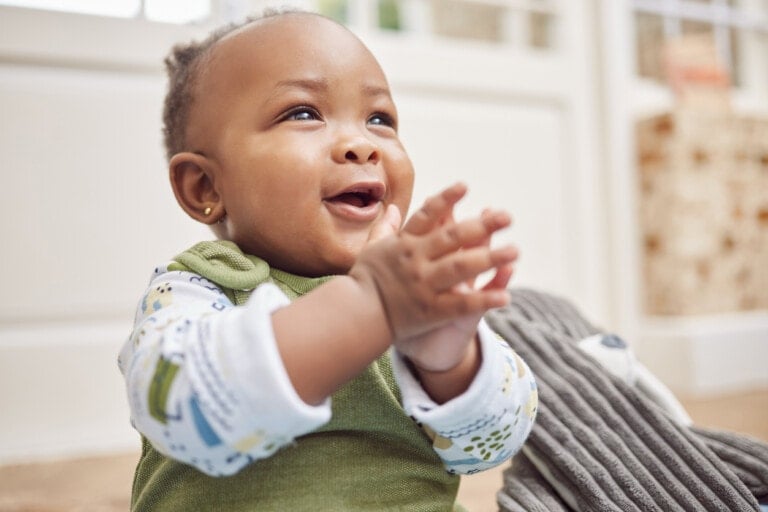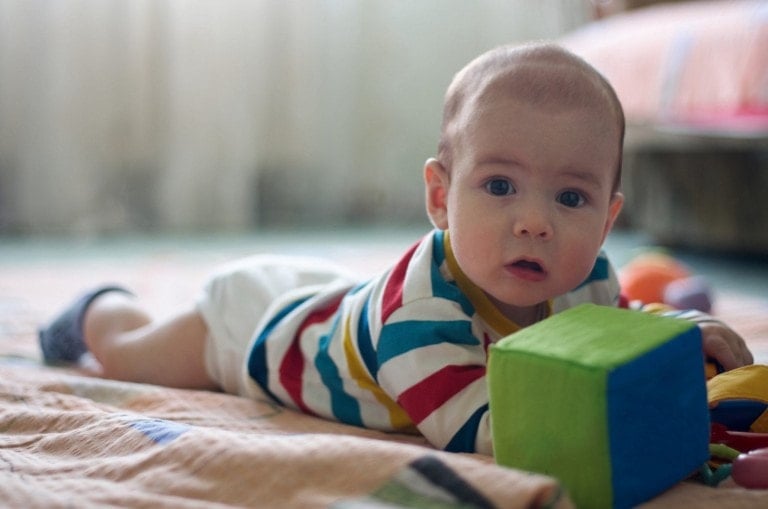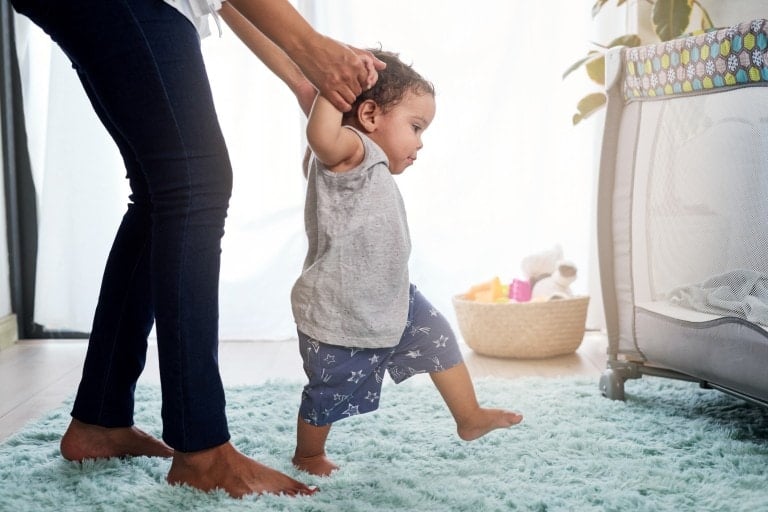Move that coffee cup out of reach! It won’t take long until your baby grabs things within their sight. Like all aspects of early child development, learning to reach and grasp is a skill attained over time as mini-milestones occur. But you may wonder when babies start grabbing things.
Reaching and grabbing things is essential in development because it allows babies to explore their world more closely, bringing interesting objects closer to their eyes for inspection and into their mouths to learn even more. So, let’s take a closer look at when babies start reaching and grabbing things.
When Do Babies Start Grabbing Things?
You may think, “My baby was grabbing and holding my finger the day she was born!” This is the grabbing reflex, also called the palmar grasp reflex. When newborns feel pressure in the palm of their hand, they automatically close their fingers around the object and grasp it. This is one of the newborn reflexes for survival as it helps babies hold on and keep themselves stationary and safe.1
As newborns, babies do not know they are grasping. They do not do it on purpose, and they cannot release their fingers purposefully. To let go, the reflex has to release, or another reflex must take over. Around four to six months, this reflex starts to integrate or go away, and purposeful grasp and purposeful release can now occur. When babies have a purposeful release, they can pass a toy from one hand to the other or put one toy down to pick up another.
Purposeful Grasping Starts Around Four Months
Around four months, you will notice your baby grasping with the pinkie side of their hand, as they have better control over those fingers. Around five months, they have better control over grasping in the center of their hand. And around six months, babies begin to use their thumbs to help them hold onto objects, giving them even more control.2
At the same time, babies’ vision is becoming more acute. While vision continues to develop and refine until well after the child’s fifth birthday, the first year is a critical period for visual development. When babies are born, they can best see about eight to 12 inches from their face, so their world is very close to them. Anything beyond that is slightly out of focus.3
Babies can best see black, white, red, and shades of gray at birth. The rods and cones in their eyes are not fully formed yet, so they cannot see all the spectrum colors that will come into view throughout the first six months. This is why babies prefer to look at their parents’ faces. They are usually in the perfect range while holding a baby, and babies can see the difference in colors of features and hairlines. Right around six months, babies start to develop depth perception, so it is important to give babies many opportunities to experience viewing things at different depths. It is helpful to get outside or look out the window so babies can practice this skill.3
Dexterity and Vision Skills are More Refined Around Six Months Old
A magical thing happens around four to six months! Vision skills refine, and babies can see all the interesting objects around them. Their dexterity skills also emerge, allowing them to bring these fascinating objects closer for further study. Babies at this age learn a great deal about their world by putting things into their mouths. In general, lips, tongues, and the mouth have a lot of nerve endings, and babies learn through their senses. Tasting objects and feeling the shape and texture of the tongue is a great way to learn about the world.5
Right around six months, babies begin to be able to pick up objects on their own, using a raking motion. It is great to encourage this, as it strengthens the muscles inside the hand.
Radial Digital Grasp Starts Around Eight Months Old
Around eight months, babies develop a radial digital grasp, where they can pick up objects between their thumb, index finger, and middle finger. This evolves into a pincer grasp, where babies can pick up smaller things with their thumb and index finger. Think Cheerios on the highchair tray. This is when we need to start being vigilant of choking hazards, as a penny or bead can go from the floor into a baby’s mouth in the blink of an eye!
Encourage Your Baby to Start Grabbing Things
Here are some tips to help encourage reaching and grabbing for things:4
- Start early and allow interesting toys within babies’ view to encourage them to reach and grab.
- Avoid mittens and folding sleeves over babies’ hands so they can explore by putting their hands in their mouths and moving their fingers around.
- Allow tummy time. Babies can bring their hands into their line of vision and start to bear weight through their hands. This builds strength in the hands and arms.
- Before babies can pick up toys on their own, place soft toys in their hands and allow them to feel the textures.
- To encourage interest, provide exciting toys with colors, textures, and interactive components.
- Avoid electronic toys, as they do not encourage as much interaction with hands.
- Provide board books and cloth books, and teach your baby how to turn the pages.
This is just the beginning of your baby reaching and grabbing for things (mostly things they shouldn’t have!). Soon they will be holding crayons, coloring, writing their name, and picking flowers for you! Remember that your baby will develop these skills in their own time, so don’t worry if they are not reaching and grabbing for things exactly on this schedule. If you are concerned that your baby is delayed in their milestones, talk to your pediatrician.













